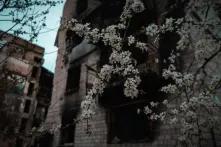We talk about the situation with the deportation of Ukrainians to Russia, environmental security, migration, education, culture and media as a result of the Russian-Ukrainian war. First published on Share the Truth.

Casualties
As of June 19, 24 862 civilian casualties were recorded as a result of Russia’s all-out invasion of Ukraine, including 9083 killed and 15 779 injured according to UN OHCHR. OHCHR believes that the actual figures are considerably higher, as the receipt of information from some locations with intense hostilities has been delayed and many reports are still pending corroboration. Since the start of the war, more than 1526 children have been injured or killed by Russian armed forces. 493 children were killed due to military activities, more than 1033 children were injured mostly due to shelling and airstrikes.
Forced migration
5 977 800 individual Ukrainian refugees were recorded across Europe as of June 23.
Deportation
19 489 children have been reportedly taken to Russia according to Ukrainian government figures. As of June 29, 373 Ukrainian children have been returned to their families. Meanwhile, Russians take children of the Zaporizhzhia region ‘on vacation’ to the Chuvash Republic in the Russian Federation with no intention to return them under the guise of martial law in the region, which was imposed on the temporarily occupied territories last fall.
Environmental security
According to the estimates by the Kyiv School of Economics, the consequences of emissions resulting from the hostilities have been catastrophic, with total losses already reaching almost $4.2 billion. In particular, $1.8 billion was caused by forest fires, $1.6 billion by grass fires and $752 million by the burning of oil and oil products. This amount does not include the direct damage caused by the explosion of the Kakhovka hydroelectric power station in the Kherson region by the Russian forces on 6 June. In addition, large areas of Ukraine have experienced significant damage to the surface soil layer as a result of the construction of fortifications, the explosion and burning of munitions, military maneuvers, etc. Specifically, 186,000 square kilometers of land, or almost 31% of Ukraine’s territory, are at risk of damage and pollution. Of this, more than 20 000 square kilometers are more than 75% damaged. The Donetsk, Kharkiv and Zaporizhzhia regions have suffered the most damage.
According to the Ministry of Environmental Protection and Natural Resources of Ukraine, as of June 26, the water level in the Dnipro River near Kherson has returned to normal and is 0.33 meters (according to the Baltic system). Overall, since June 8, the water level has decreased by over 5.35 meters from its maximum level of 5.68 meters. As of June 16, the Dnipro River returned to its regular riverbed near the city of Kherson. Low-lying areas of the terrain remain flooded, as the natural flow of water is blocked.
Food security
According to Reuters, the UN Deputy Secretary General for Humanitarian Affairs Martin Griffiths stated that the explosion of the Kakhovka HPP in the Kherson region ‘will have a huge impact on global food security, lead to a rise in food prices and could cause drinking water problems for hundreds of thousands’. He also emphasized on the disastrous impact on access to drinking water as up to 700 000 people depended on the reservoir behind the dam.
Education
Since the beginning of the full-scale invasion, 3328 education institutions have suffered bombing and shelling, 3063 of them have been damaged and 265 have been destroyed completely.
Culture
As of June 19, UNESCO has verified damage to 260 sites since 24 February 2022 – 112 religious sites, 22 museums, 94 buildings of historical and/or artistic interest, 19 monuments, 12 libraries and 1 archive. Three-quarters of the damaged sites are in three regions: the Donetsk region, where the fighting is still particularly intense – with 45 damaged cultural sites; the Kharkiv region – with 40 damaged sites; and the Kyiv region – with 26 damaged sites.
Moreover, after the Russians blew up the Kakhovka Hydroelectric Power Plant, the flooding has already caused irreparable damage to unique cultural monuments and to the Nyzhniodniprovskyi (Lower Dnipro) National Nature Park, and many valuable sites such as Scythian and Cossack kurgans (burial mounds) are in danger.
Media
In the year and four months since the start of the full-scale invasion, Russia has committed 519 crimes against journalists and media in Ukraine. In June 2023 five freedom of speech violations committed by Russia were recorded. Namely, these include kidnapping and attacks on journalists, as well as cyber attacks on Ukrainian media websites. Moreover, during the fifteenth month of the war, four media workers who defended Ukraine from the Russian invaders were killed on the frontline: Yevhenii Osievskyi, Viktor Petrov, Roman Chornomaz and Ivan Shulha. As of June 24, a total of 63 media workers died in Ukraine, with 10 of those dying while reporting.
This article first appeared here: ua.boell.org
